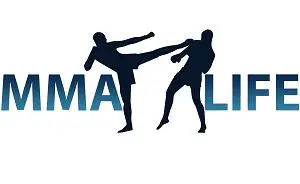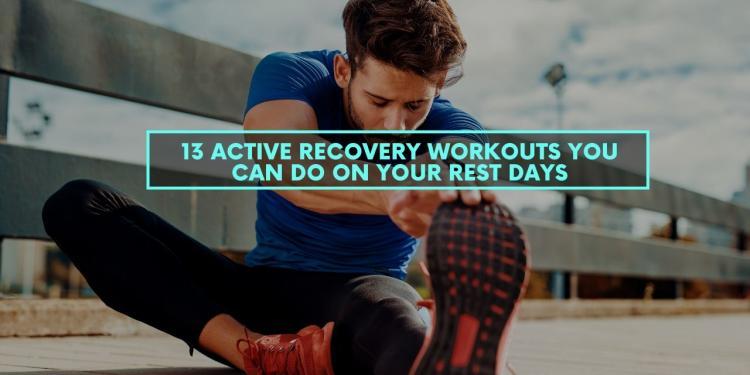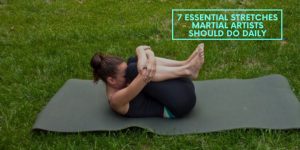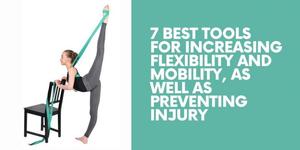You’ve pushed your limits in the gym or the fighting cage. Now, it’s time to recover. But don’t let the term “rest day” fool you into collapsing on the couch and turning on Netflix.
Your rest day is one of the most important parts of your workout/training routine, because it’s during these crucial rest days that your body repairs itself and grows stronger.
Alas, many boxers, wrestlers and fighters hone in on the actual workout while only giving their recovery a quick, passing thought.
If that’s you, it’s time to reinvigorate your training and hit new levels of strength and endurance by rethinking the way you spend your rest days.
What’s the Difference Between Active and Passive Recovery?
Passive recovery is exactly what it sounds like: You typically do nothing other than rest. This means little to no physical activity, other than what's required for day-to-day living.

Active recovery is the exact opposite. It invites you to consider how various forms of movement positively impact your recovery, and how different actions or exercises may help to accelerate your muscle recovery and repair.
Should You Choose Passive or Active Recovery?
Passive recovery is really only necessary if you're injured and your coach, trainer or doctor advises you to take a break. In all other cases, you’re missing out on the many fitness benefits of active recovery.
For example, studies have found that active recovery does a far better job at clearing lactic acid and other metabolic waste that builds up during a workout or doing a fight.
The additional benefits of active recovery may include:
- Flushing out toxins
- Boosting blood flow, helping your body carry more oxygen and nutrients to sore muscles
- Reducing inflammation and pain
- Maintaining muscle flexibility and agility
13 Types of Active Recovery Workouts
Need inspiration for your next rest day? Choose from the following active recovery exercises and see the immediate difference in your workouts.
1. Yoga
Forget the mental image of yoga being just for hippies or women. Conor McGregor did yoga every day while training for UFC 189. On Joe Rogan's podcast, Frankie Edgar talked about how useful he found yoga during training. And Dan Hardy used to do four hot yoga sessions every single week.
Yoga is a powerful form of active recovery because it warms you up, lengthens your tendons and muscles, and protects your mobility.
Watch out, though. Some types of yoga are quite rigorous and require a high level of yoga and stamina. If you’re doing it as a form of active recovery, you may wish to choose a restorative, gentle type of yoga.
Examples include hatha yoga as well as yin yoga. The latter involves relaxing into a posture for an extended period of time, which can be especially restorative on a rest day.
2. Massage therapy
Book a massage with a registered massage therapist and experience the many benefits of massage as active recovery. Better yet, get a percussion massage gun to give yourself relief for a fraction of the price.
Try to target affected areas of your body where you feel tightness, pain or stiffness. Physical manipulation of these areas boosts circulation and presses out lactic acid.
5 Best Percussion Massage Guns
Check out our review of the best massage guns on the market
3. Foam rolling
Your muscles are wrapped in a tight structure made up of something called "fascia connective tissue." Sometimes, this tissue can become tight, especially after a workout or an injury.
Myofascial release involves putting a gentle pressure on your fascia, helping to release it and elongate it, thus easing post-workout pain and inflammation.
Foam rolling is a form of self-myofascial release. Rolling out a sore muscle can help improve your muscles’ range of motion, and also reduce tension.
Other forms of rolling include lacrosse balls, massage sticks, etc. You may experience whole-body benefits when rolling out all of your major muscle groups during rest days, as well as immediately after exercising.
7 Best Vibrating Foam Rollers
Check out our review of the best vibrating foam rollers on the market
4. Light jogging or walking
Because it’s accessible for pretty much everyone, walking is one of the simplest and best forms of active recovery for you to try.
It’s especially useful for runners, but all athletes will find that jogging or walking at a slow, steady pace can help to keep their bodies warm, keep that blood pumping, and reducing stiffness, thus aiding in recovery.
If lower-body joint pain is an issue for you, you may want to consider jogging or walking in a swimming pool (“aqua jogging”) or finding a soft surface to walk on, such as a running track or a grassy field.
5. Stretching
When done for active recovery, stretching should involve movement versus the old-school approach of getting into a stretch pose and simply holding it in a static position.
This includes:
- Ballistic stretching (which uses the momentum of a moving part of your body to help push your muscles past their normal range of motion)
- Dynamic stretching (moving your body into the same stretch over and over, slowly getting deeper with each move)
- Active stretching (holding a stretch without support, such as bringing your arm up high and to the side without holding it in place with a wall or your opposite arm)
Dynamic and ballistic stretching can be used both for a warm up and a cool down. All three forms are also perfect for rest days.
6. Tai chi
Tai chi is a form of slow, gentle exercise that hails from ancient China. And although it is not really an effective form of fighting, health experts have found it great as a form of exercise.
And don’t let the gentle aspect of tai chi fool you. Studies have found it’s very beneficial for building your aerobic endurance.
There are five different major types of tai chi, all of which involve constant, steady movement from one pose to the next.
If you’ve never tried tai chi before, consider starting with the Yang style, which includes graceful and gradual movements combined with lots of relaxation.
For more rigorous active recovery, try Chen-style tai chi, which uses a flow of punches, kicks, crouches and turns.
Other styles include Wu (focused on small micro movements), Sun (which de-emphasizes the lower body with fewer crouching poses) and Hao (focused more on proper form, and less common than the other styles of tai chi).
7. Swimming
Swimming has been well-researched as a clinical form of recovery. For example, one study found that runners who swim on their rest days tend to perform better the following day.
Swimming is ideal because it incorporates your entire body, combines both muscle strength-building as well as cardio, and is very gentle on your body because of the buoyancy of the water.
Don’t be afraid to think outside the swimming lane, too. Aquatic aerobics, aquatic weight lifting and other pool-based therapies can be a fun, enjoyable way to mix up your rest days.
8. Cycling
Cycling can help elevate your heart rate, thus boosting blood circulation throughout your system. It’s also multi-joint and low impact.
Similar to walking or jogging, cycling is very accessible because most gyms have stationary bikes. To start, try 20-30 minutes of slow cycling. It shouldn’t leave you sweaty or out of breath.
9. Playful sports
Playing isn’t just for kids. Embrace your inner child.
From rollerblading (which also improves your coordination and cognition) to your favorite team sports like baseball or soccer, playful outings gently move your body, warm you up and keep your muscles and tendons lubricated and active.
Plus, going out and having fun can restore you emotionally and spiritually, helping you to feel more rejuvenated on a psychological level.
10. Hiking
The various terrain encountered on a hike keeps your brain focused, your joints lubricated and your muscles working gently to stabilize your movements.
It’s also a great way to sneak in some calorie-torching cardio without feeling like you’re working out.
Going outside into nature has even been shown to boost your mood, alleviate tension and reduce stress. And the better your mental health, the stronger your focus and your endurance when exercising.
If you're hiking uneven surfaces, be sure to get some really good insoles.
11. Light weightlifting
Feeling achy after chest day? Having a hard time sitting after a day of deadlifts and squats?
Heading back into the gym to do a gentler form of the same exercise that has left you with serious DOMS can be exceptionally restorative and healing.
Try and do the same exercise on your rest day, but with much lighter weights. Aim for something that weighs 70% to 80% less than what you lifted the day before, and don’t lift to failure.
Repeating a very light, gentle form of your previous workout sends blood to the affected muscles, accelerating muscle repair and recovery.
12. Hip and core activation
Your hips, especially your hip flexors and hip abductors are foundational for all forms of movement, from pivoting fast to kicking hard to lifting high.
Likewise, your abs and core muscles stabilize you through all ranges of motion.
Don’t neglect these foundational muscles on your rest days. For recovery, try gentle exercises that keep these critical muscles warm and active.
This can include simple bodyweight movements like dead bugs and planks.
By activating your core and hip muscles on your recovery days, you return to the gym having laid the groundwork for a strong workout.
13. Stair climbing
Whether it’s done on a stair machine, or you simply take the stairs at work instead of the elevator, climbing stairs activates all of the big lower muscles in your body. This is helpful on rest days after a day of lower body exercises, but it’s also useful for boosting your whole-body circulation and warming you up fast.
When Should You Do Active Recovery?
There are three specific times that may benefit your fitness and wellness the most:
- Cooling down after you exercise or fight
- In the midst of circuit training (e.g. jogging between high-intensity sprints)
- On rest days after a fight or a big workout in the gym
As a cool down after a hard workout, spend 10-20 minutes doing some light movement instead of just collapsing on the ground or sitting on a bench. This might mean going for a slow, steady walk on the treadmill or rolling out your muscles with a foam roller.
If you’re doing circuit training or interval training, mixing in a series of active recovery exercises between sets of high-intensity pushes can help you minimize fatigue and improve performance during the high-intensity parts of your training.
Finally, if done on a rest day, active recovery can help support your full workout regimen. It keeps you moving, so you don’t fall off the wagon. And it can help you perform better when you return to the gym. For example, yoga on a rest day can help you return to the gym more supple and flexible than ever!
A Word of Caution
If you’re competitive or simply enjoy pushing your limits, you may be tempted to turn “active recovery” into an “active workout.” But remember, recovery is crucial for your overall strength and stamina.
Don’t sabotage your next workout by skipping your rest day, even if your rest day involves healing, restorative movement like myofascial release or yoga.
When enjoying any of these 13 forms of active recovery workouts, always check in with how you’re feeling and how hard you’re pushing yourself.
The workout, regardless of what it is, should be capped at 50% of your maximal effort. You may even want to keep it hovering around 20% to 30% of what you think you could actually do.
Finally, bring your awareness to how you feel after your active recovery workout. If you’re feeling even more fatigued, achy or tense than when you started, bring the intensity down even further.
In the end, active recovery is about helping you to get stronger faster...when you return to the gym. It’s not about sneaking in one more workout day.




